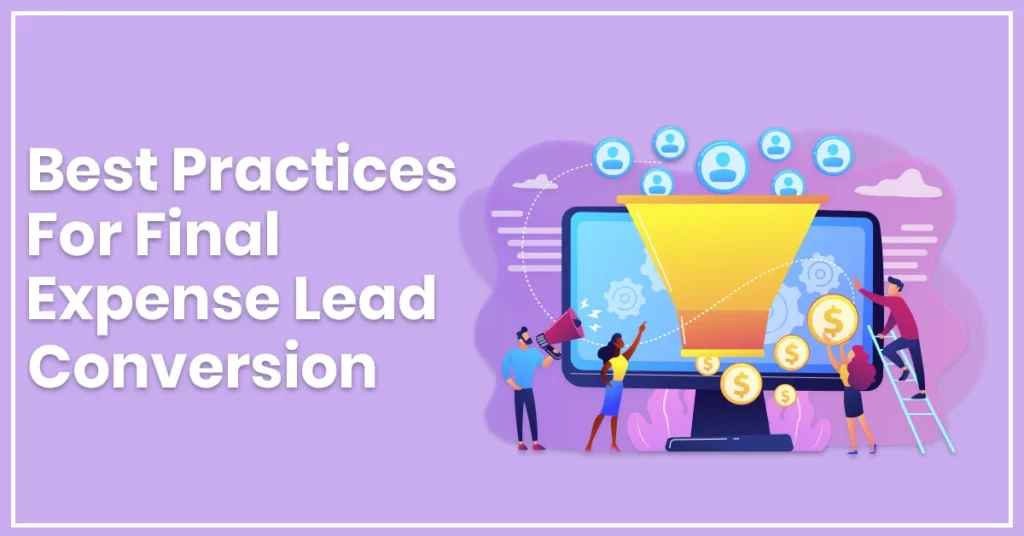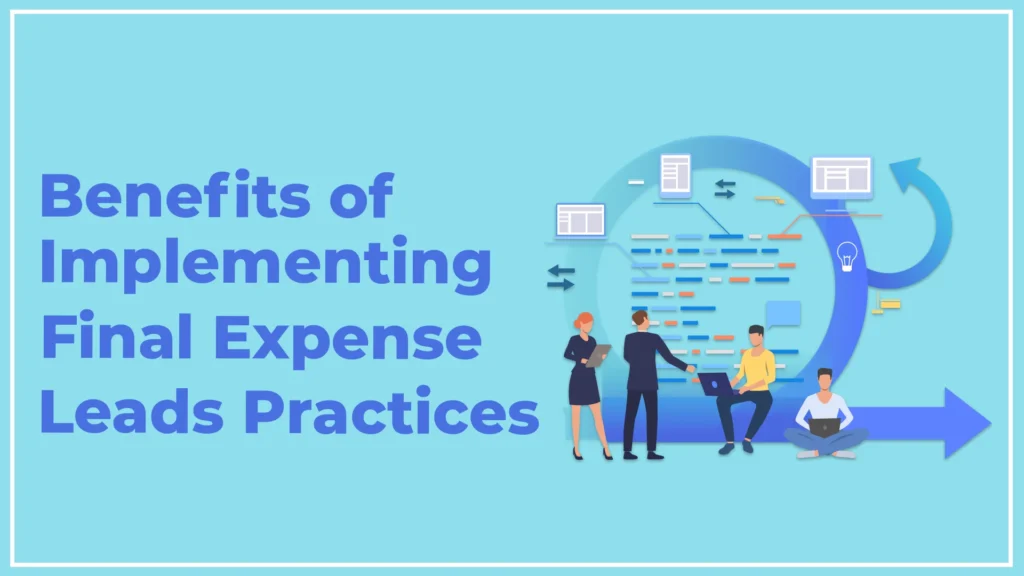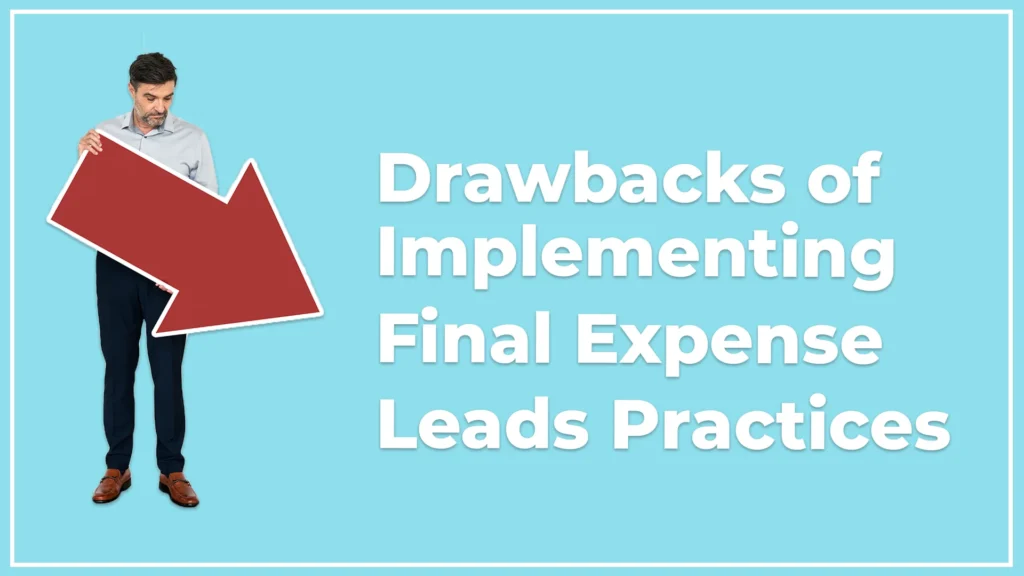
Final expense lead conversion can be a gratifying endeavor, but it necessitates a well-considered strategy to maximize success. Final expense insurance, sometimes known as burial or funeral insurance, serves as a financial safety net for families to manage end-of-life costs. For agents or brokers, effectively converting these leads into sales can be quite demanding without employing the appropriate tactics.
This article outlines the best practices for final expense lead conversion, discusses the benefits and drawbacks of each approach, and concludes with key takeaways.
Table of Contents
Best Practices For Final Expense Lead Conversion:
1. Understand Your Audience:
Best Practice:
Final expense insurance targets a specific demographic—typically seniors aged 50 and above. It’s crucial to understand the financial concerns and emotional needs of this audience. They are often on fixed incomes, looking for affordable solutions to avoid leaving financial burdens on their families.
How To Apply:
- Research to understand the unique financial pressures of seniors.
- Highlight the affordability and simplicity of final expense insurance during conversations.
- Focus on the emotional value, emphasizing peace of mind and protection for loved ones.
Benefits:
- Building trust with your audience by showing empathy and understanding.
- More meaningful conversations lead to higher conversion rates.
Drawbacks:
- Requires more personalized attention and time, which could slow down the process.
2. Leverage Multi-Channel Communication:
Best Practice:
Utilize various communication methods to reach out to leads. Seniors may prefer different communication channels, so it’s important to diversify your outreach efforts. These may include phone calls, emails, direct mail, or even face-to-face meetings.
How to Apply:
- Start with phone calls, as they allow for personal, two-way conversations.
- Follow up with emails or direct mail for leads who prefer written communication.
- Use text messages for quick reminders or appointment confirmations.
Benefits:
- Reaching leads through their preferred communication channels improves response rates.
- Offering multiple touchpoints keeps you top-of-mind without being pushy.
Drawbacks:
- Managing multiple communication channels can become overwhelming without proper tools or systems.
- Not all leads will respond in the same way, requiring flexibility and adaptability.
3. Speed of Response:
Best Practice:
One of the most effective ways to convert leads is to contact them as soon as possible. Statistics show that the faster you follow up with a lead after they express interest, the higher your chances of conversion.
How to Apply:
- Use a CRM (Customer Relationship Management) tool to receive instant notifications when a new lead comes in.
- Set a goal to contact leads within 15 minutes of their inquiry.
- If they don’t answer the phone, leave a voicemail and send a quick follow-up email or text message.
Benefits:
- Increases the likelihood of catching leads while they’re still in the decision-making mindset.
- Demonstrates professionalism and attentiveness.
Drawbacks:
This may lead to burnout if you’re handling a large volume of leads without proper support.
4. Educate Rather Than Sell:
It requires a dedicated team or system to ensure rapid response times.
Best Practice:
Instead of hard-selling final expense insurance, focus on educating your prospects about the product and its benefits. This demographic is often cautious and appreciates clarity and transparency.
How to Apply:
- Provide clear information about policy benefits, coverage amounts, and payment options.
- Be honest about the limitations of final expense insurance.
- Answer any questions patiently, and avoid rushing prospects through the decision-making process.
Benefits:
- Builds credibility and trust, making it easier to close sales over time.
- Educated prospects are more likely to buy, knowing they are making an informed decision.
Drawbacks:
Requires patience, as educational conversations can take longer than sales pitches.
Some prospects may need multiple touchpoints before making a final decision.
5. Offer Flexible Payment Options:
Best Practice:
Seniors on fixed incomes often appreciate flexibility in payment options. By offering a variety of payment plans, you can make the process more accessible and reduce the friction involved in decision-making.
How to Apply:
- Work with insurers who offer monthly, quarterly, or annual payment plans.
- Clearly explain the cost structure, including any discounts for paying upfront or early.
- Provide transparency about any fees or penalties for missed payments.
Benefits:
- Increases the likelihood of converting price-sensitive leads.
- Builds goodwill by offering solutions that fit within the prospect’s financial means.
Drawbacks:
- It may take longer to process payments if prospects are confused about their options.
- Some payment plans may have additional administrative costs for the agent.
6. Follow Up Consistently:
Best Practice:
Lead conversion is rarely a one-call process. Consistent follow-up is essential to nurture leads and keep them engaged. However, follow-up efforts should strike a balance between persistence and respect for the prospect’s time.
How to Apply:
- Schedule regular follow-ups, ideally once a week, without being overly aggressive.
- Mix up your follow-up methods: sometimes a phone call, sometimes an email.
- Keep track of each lead’s status in your CRM to avoid repetitive messages.
Benefits:
- Keeps you in the prospect’s consideration set without overwhelming them.
- Increases the likelihood of conversion over time, as some leads may need more time to decide.
Drawbacks:
- Requires discipline and organization to maintain consistent follow-up.
- Risk of being perceived as too pushy if follow-ups are too frequent or aggressive.
7. Use Testimonials and Social Proof:
Best Practice:
Final expense insurance is a significant purchase decision, and many prospects are swayed by the experiences of others. Use testimonials and case studies to demonstrate the positive impact of final expense policies.
How to Apply:
- Share real-life stories of how final expense insurance helped other clients.
- Encourage satisfied customers to leave reviews or provide testimonials.
- Create simple case studies to illustrate the benefits of final expense insurance.
Benefits:
- Builds trust and credibility, making it easier for prospects to relate and take action.
- Helps overcome objections and uncertainty about the product.
Drawbacks:
- Gathering testimonials takes time and effort.
- Some prospects may not be influenced by testimonials if they feel their situation is unique.
Benefits of Implementing Best Practices:

- Higher Conversion Rates: Applying these best practices can significantly improve your lead conversion rates by building trust and maintaining consistent communication.
- Customer Satisfaction: These strategies focus on providing a positive experience, which leads to higher satisfaction rates and long-term customer relationships.
- Efficient Lead Management: By using tools like CRM systems and streamlining communications, agents can manage leads more effectively and ensure no opportunities are missed.
Drawbacks of Implementing Best Practices:

- Time-Intensive: The focus on building relationships and educating prospects can take longer than aggressive sales tactics, requiring more time and effort.
- Requires Investment in Tools: To manage multi-channel communication and follow-up, agents may need to invest in CRM systems and other lead management tools, which can be costly.
- Not Always Scalable: Personalization and empathy are essential for success, but they can be difficult to scale, especially with a large volume of leads.
Conclusion – Final Expense Lead Conversion:
Final expense lead conversion requires a balanced approach of empathy, education, and efficiency. By understanding your audience, responding quickly, providing clear information, and offering flexible solutions, you can build trust and increase your chances of converting leads. Although these practices may require more time and resources, the long-term benefits—higher conversion rates and satisfied clients—make the effort worthwhile. By consistently applying these best practices, agents can create a reliable and sustainable method for converting final expense insurance leads into valuable, long-term clients.
